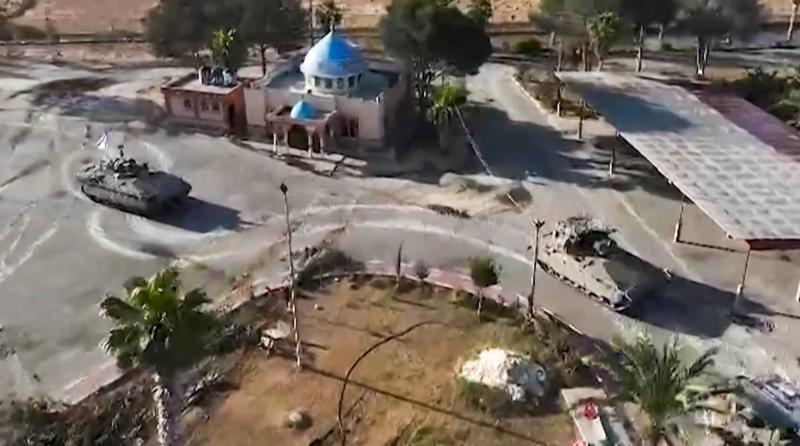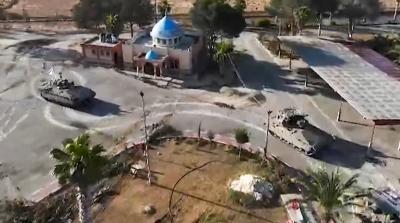Satellite images and videos released by the Israeli military stationed around Rafah on social media show roads surrounded by complete destruction, including residential buildings that have been entirely demolished. According to the British newspaper "The Guardian," the Rafah crossing appears destroyed, which was the last exit route from Gaza.
The newspaper continued that shortly after, Israel stated that it had "operational control" over the entire "Philadelphia Corridor," a narrow strip of land adjacent to the border with Egypt, where Israeli presence is prohibited under the peace treaty of 1979 between the two countries.
Israeli forces have created a new route between the Rafah and Kerem Shalom crossings, known as the "David Corridor," and expanded parts of the road along the Philadelphia axis to facilitate the passage of military vehicles, according to "The Guardian."
These actions aim to support the long-term presence of Israeli military forces in Gaza, indicating a slim prospect for an end to the war that has already lasted over nine months, the longest in Israel's history.
Nadav Weiman, head of the organization "Breaking the Silence," which includes veterans of the Israeli army who criticize the state's policies and the military, stated, "It’s almost a war forever."
The changes in Rafah align with Israeli military constructions elsewhere in Gaza, including the demolition of the buffer zone along the border with occupied territories and the construction of the "Netzarim Corridor," which divides the area and isolates the city of Gaza from population centers to the south.




